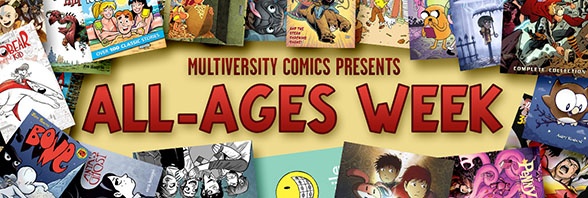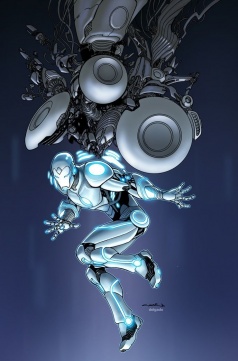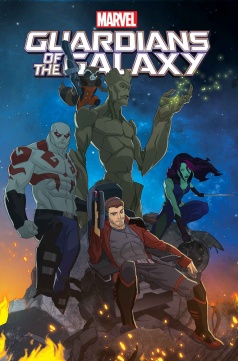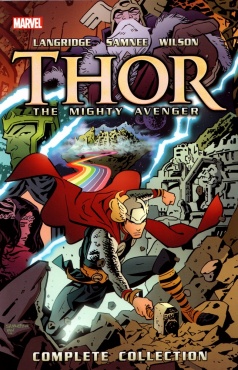
Whether it’s fair or unfair, reasonable or unreasonable, there’s one thing that remains consistently true for both industry outsiders and insiders: Marvel Comics and DC Comics are perceived as the center of the comic book universe. Many would fight against this idea, but whether in the minds of mainstream journalists, your average Joe or Jill at the comic book shop, or the editor of some highfalutin comic book website, Marvel and DC get the most attention and are often looked at as the barometer of the health of the industry.
Because of that very idea, many look at the comic industry and get the idea that the comic industry is failing younger readers and that it has seemingly no interest in creating the readers of tomorrow. But that’s not true, as you saw in my earlier piece.
It’s just true at Marvel and DC.
As I interviewed and spoke with creators, publishers, librarians, bookstore employees, parents and more for this week of content, there were two things that came up about as frequently as anything else. Those were:
1. Kids are very interested in superheroes
2. Marvel and DC isn’t producing much of anything that is either suitable for children or of interest to them
And I think that’s a big part of where this myth that there aren’t new comic readers anymore comes from. Marvel and DC have looked at that demographic and for the most part – at least apparently so – deemed it one that isn’t valuable, and thus one they don’t want to serve. Those who only take cursory glances at the industry see that and say things like, “well, I guess the comic industry doesn’t want new fans.”
“When people talk about, ‘oh you know, we’re not creating new comic book readers’, I don’t think that’s true,” shared Jack Baur, a librarian from the Berkeley Public Library system. “From my experience, it’s definitely not true. Marvel and DC aren’t creating new comic readers, which is deeply, deeply ironic and really sad because they’re in the best position to do it.”

“I grew up reading superhero comics, I was a DC fangirl all the way ever since 3rd grade,” said Kat Kan, a long-time comic advocate and current librarian at St. John Catholic School in Panama City, Florida. “But when my sons were young kids, I couldn’t let them read Batman – the comics were too dark and violent. Same with most of Marvel – I couldn’t let them read those until they were at least 12 or 13 years old. Most of what Marvel and DC publish is not suitable for my school library.”
That’s the biggest issue right there. It’s not just libraries that have concerns with them. The most frequent complaints from parents about the current state of comics were directly related to content, most notably in relation to women in varying states of undress and their grim, violent nature. Both of those are things that Marvel and DC have been accused of in the past, and often deservedly so. It’s hard to look at a book like “Axis” or “Justice League” and think that they’re suitable for children. Even beyond content, there are simpler issues for younger readers when it comes to books by the Big Two, such as a question that negatively impacts adult newcomers as well: where do you start?
“I think there aren’t enough readily accessible entry points,” said Baur, before elaborating on both that issue and another one that faces new Marvel and DC readers.
Continued below“When I have kids wanting to start reading western comics in particular – manga makes it easy to know where to start, you start at number one – but when I have kids who want to read western comics and are asking me how, what I try to tell them is that a certain amount of not knowing comes with the territory,” he said. “I think comic book readers get used to the idea that they’re not going to catch every single reference, but the fact that the references are there are the texture. To hardcore readers, that’s the world, but to new readers, it’s totally impenetrable.”
“I have to encourage kids to not get hung up if they don’t know who every single person is.”
As we’ll talk about in a later piece, one of the best features of comics is the fact that they make kids who sometimes struggle with reading feel good about themselves. Reading a comic is inherently rewarding because it’s accomplishing something they don’t often do, and the experience positively impacts their self-worth and their relationship with reading. When a child reads a Marvel or DC comic and is left confused, it can have the opposite effect, but that naturally goes with any reading experience they have, not just a Marvel or DC one.

“Marvel does have its new Marvel Universe line, based on the animated series, so that helps. DC’s superhero comics, though, the kids’ stuff is too much for little kids, at least in my students’ minds,” she said. “I pick up the Free Comic Book Day and Halloween Comic Fest comics to give away every year, and the older kids won’t touch the kid-friendly DC titles. As much as I love ‘Tiny Titans’, my students want the ‘real’ Superman, Wonder Woman, Batman, Green Lantern, Flash, and other superheroes in books that they can read. And more librarians would also be able to put those titles in their libraries for kids.”
With Marvel, several parents opined the fact that many of their efforts aren’t comics designed for their children, but adaptations of their animated series like the upcoming “Guardians of the Galaxy” book. One of the golden rules of books for kids is “don’t talk down to them”, and according to several parents, their children turn their noses up to books of that sort. They look at the animated screen caps and wonder why they don’t just watch the show. Even when Marvel and DC attempt to win with younger readers, they’re losing.

But books like Raina Telgemeier’s “Smile” and Kazu Kibuishi’s “Amulet” continue to sell like hot cakes, and that’s without any of the predisposed interest that Marvel and DC have in spades with children.
That’s the saddest thing about this subject. Kids are very interested in reading Marvel and DC comics. Kids want to read good comics about their favorite heroes, they just don’t want to read any of the books the Big Two has produced, and they don’t want to read them in the format they’re being delivered in. They don’t know where to start, and they don’t understand the rigorous continuity behind each book and character. Despite a built-in passion for the characters, younger readers just aren’t reading Marvel and DC titles really.
Continued belowIt’s partially because Marvel and DC seemingly have a vision of what kids want, and according to those I spoke to, their vision couldn’t be further from the truth. It’s also because Marvel and DC look at younger demographics and they serve them like they would anyone else. It’s a one size fits all way of thinking, and the problem is, that just doesn’t work. What works for me or other regular monthly comic readers won’t necessarily work for kids today, because we’re not the same.
If Marvel and DC truly want to bring in new readers rather than just going through the motions of bringing a variety of all-ages lambs to the slaughter, they’re going to have to rethink how they approach these readers. Not just what they’re releasing, but how they’re releasing it. Until then, the perception of how Marvel and DC handle younger readers will continue on, whether they want it to or not.
Note: DC declined to comment for All-Ages Week. Marvel willingly offered assistance, citing it “an important topic,” but couldn’t get the interviews approved in time for publishing.






